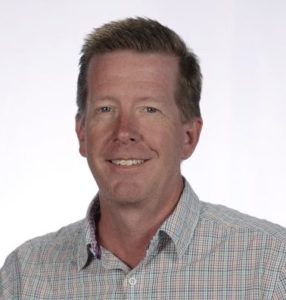One-on-one with… Randall Holley
Randall Holley has been IT director for nine years at Commonwealth Care of Roanoke in Roanoke, Va., a long-term rehabilitation provider with 12 skilled nursing locations across the state. During his tenure, the organization has adopted advanced technology and telemedicine tools to bring specialized care to any bedside at any of Commonwealth's locations. He recently told Long-Term Living what his company is doing with electronic health record (EHR) integration and telehealth, including virtual wound consults.
What technology has your company embraced?
We have been using electronic health records for almost four years. We vetted out 12 different systems before we chose PointClickCare. We felt like interoperability was going to be important and we thought [that system] gave us the greatest advantage to overcoming the interoperability issues out there. To a large degree, that’s been very true.
We are big enough that we can try new things and see if they work or not, but we are not so big that it takes forever for us to do that. We can turn our ship pretty quickly. I am fortunate that our owners are willing to give new things a try if we think it will benefit residents. We don’t mind stepping out there and being the Lewis and Clark of healthcare technology. We are willing to take a chance.
What system integration do you have now?
We integrate with outside companies to get lab results and radiology reports and with acute care EHRs such as Epic or Cerner. We have been through 17 integrations with other systems, so we have gotten pretty good at that process. We are currently integrating our pharmacy.
We are also eliminating hard charts on our units. We are scanning all documentation into [our EHR] so it can be viewed online. Doctors and nurses do not have to be present in the center. We are doing that in preparation for remote monitoring telemedicine. We see that becoming a major piece of our healthcare environment.
What’s been the biggest challenge in introducing technology, so far?
The biggest hurdle has been buy-in from physicians. They work with different centers, so they have to deal with a bunch of different EHR systems. For example, a module called Practitioner Engagement allows them to remotely sign orders and things like that. We are in the process of rolling that out. We are having regional meetings with our physicians as well as one-on-one training where we help them load the apps on their devices and show them what a benefit this is not only to us but to them as well. That hands-on approach has really helped. There have been speed bumps, but we have gotten over them. I have to applaud my IT team for that.
How are you using telemedicine to innovate?
As far as I know, we are the only long-term care organization in the country using [Vusix] Smart Glass technology in the treatment of its residents. [For our pilot,] we had the wound nurse wear the glasses while in a resident's room and do a [virtual] consult with our corporate wound nurse, who would give advice and instructions on how to treat that wound. We are looking at several key metrics through this pilot, and they show we have been very successful. We have documented cases of preventing readmissions to hospitals. We had one resident with a wound that had not healed for over two years. By using this technology, we were able to close and heal that wound.
Our next step is to get not only our internal staff involved using the Smart Glasses, but working with wound care physicians for external consults, eliminating the trauma and expense of transporting residents to the wound care clinic. We’ve been doing that for seven months and had positive results.
The cost is not high. You just need a license and a pair of Smart Glasses to get started. It does not require much training for the staff to use it. The best thing about this is it is hands-free. The nurse wearing these glasses can do anything [while talking] on the microphone.
You’ve seen dramatic technological changes over the years. Where is the LTC industry headed next?
The change in the industry over the past three to five years has been phenomenal, and it continues to change with all the different payment models and bundling models and telehealth. EHRs were a huge step. There are organizations that still don’t have an EHR, [but] I think you have to have one if you are going to make it.
Being mobile is the future. In our centers, we have kiosks on our walls and desktop units at our nurses’ stations and a few computers on wheels (COWs). In the next six months, though, we will be untethering ourselves. We are giving our care staff mobile access so they can document care right at the bedside. We will be putting iPads in our nurses’ hands. We are putting iPod minis in our CNAs’ hands. We are taking the kiosks off the walls. We feel that in today’s environment, it’s almost a requirement.
Some people are afraid employees will be texting on their phone or paying attention to the computer screen and not the residents. We found that’s not true. The population we serve is the fastest-growing Internet-using population out there. They push me. They ask me for things. They want to be able to get on Facebook. They want to be able to do all these things on the Internet.
I Advance Senior Care is the industry-leading source for practical, in-depth, business-building, and resident care information for owners, executives, administrators, and directors of nursing at assisted living communities, skilled nursing facilities, post-acute facilities, and continuing care retirement communities. The I Advance Senior Care editorial team and industry experts provide market analysis, strategic direction, policy commentary, clinical best-practices, business management, and technology breakthroughs.
I Advance Senior Care is part of the Institute for the Advancement of Senior Care and published by Plain-English Health Care.
Related Articles
Topics: Articles , Executive Leadership , Leadership , Technology & IT











